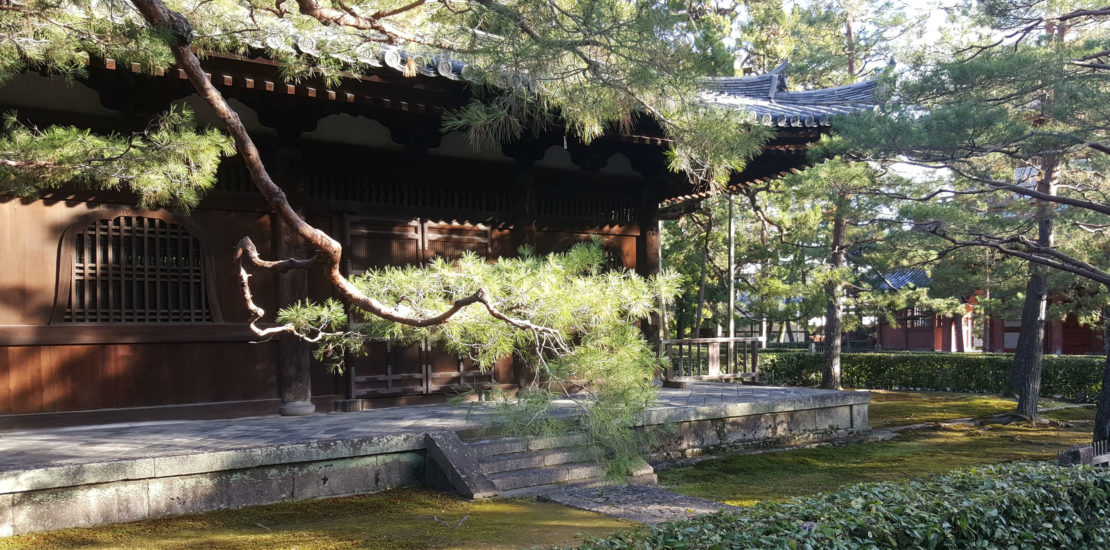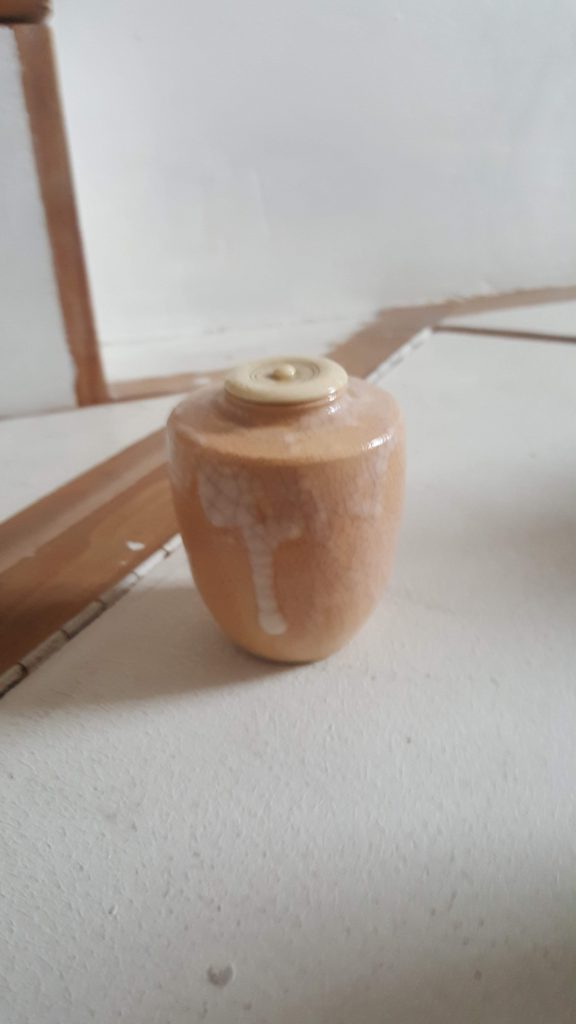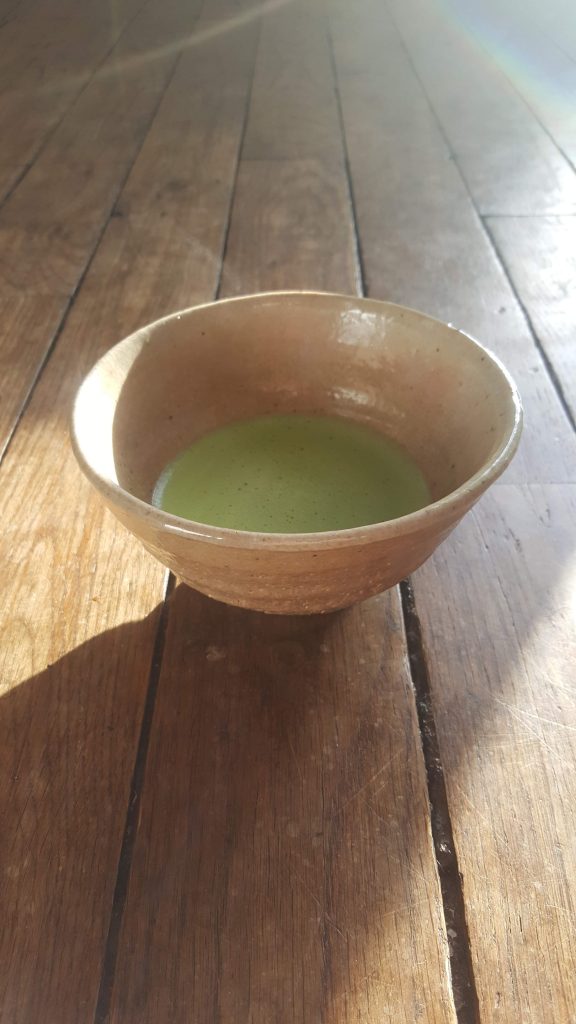
In its very long tradition, the Japanese tea ceremony always had a strong link to the items required to prepare tea. ‘Required’ might not be the word though: there is an immense history of ‘Mitate’, to repurpose an item in order to use it for tea. So a significative part of the items used for tea today is actually ‘imported’ from a different context. Today, to do a ‘Mitate’ is advised only if one cannot do otherwise. I am left with all these items, profoundly treasured by the tea masters of old days, and I wonder why these items were liked so much.
The value of tea utensils, how they come to be prized, fetishized and even revered as almost godly while they used to be common items of daily lives — that intrigues me. Today, I would like to dig into that history to highlight one important part of my own experience of tea: how items come to be valued in tea.

Small crafts, infinite value
Going back to the origins of the Modern tea ceremony, the Momoyama period (late 16th century), we see that one of the most prized items of the tea ceremony was not in any way designed for the tea ceremony. This item is called a Cha-ire (or tea caddy). Today, the Cha-ire is well known as a formal tea container, used mostly for koicha, a way to prepare tea among experienced practitioners. But the Cha-ire used to be a small Chinese ceramic that was used for oils and medicines…yet, as items of high beauty and renown origin, they became an important part of the aesthetic life of the Warlord cast and even…a political question. In the late 16th century, three of these tea containers were so highly prized for their beauty that it was said that no man could pretend to rule over Japan without having control over them. Or it is also said that, during the same Momoyama period, Oda Nobunaga offered a Cha-ire (not one of the famous three) to one of his retainers saying that all the lands of Japan could not show his gratitude, so this tea caddy would be a better present.
Ceramics, lacquer, metalworks, woodworks, all crafts can produce items that are so fascinating that men kill for them…or even die for them. One of the three famous tea caddies I mentioned actually got caught in a fire. A retainer of his owner, seeing this, cut his belly open and put the container in his own bowels, wrapped in a cloth, to protect it from the fire…his body was found with the tea caddy intact and this story is still told today.
In the tea room, the fondness for an item is no laughing matter. Part of the traditions of Japanese tea comes from the display of Chinese wares among aristocrats. After the stories I have told, I guess that my reader would not be surprised to hear that, to this day, tea bowls and tea caddies are revered and put on special silk cloths to be appreciated. In fact, in a complete tea ceremony meeting, a big part of the conversation is dedicated to the presentation of the items used, the explanation of their origin and the names that they received. So much so that a good knowledge of Japanese ceramics is advised to become a proper guest.

Merchants of goods, merchant of stories
Why do items have monetary value because they are old or belonged to famous people? In Japan, the market of tea wares also highly depends on the maker of the utensil or even the box in which it is contained. But tea masters of the late 16th century also had items they highly prized without any real value on them. They prized these items for their beauty. The irony here— or the trick — is that their love for some items made these items famous and they are now sold for incredible prices. Nevertheless, there is this interesting phenomenon, in many tea people I know, to get attached to nameless ‘common’ items that they prize more than their oldest tea caddies.
How does one decide on the value of things? Having roamed around numerous antique shops and markets, found items for less than a dollar and desired items worth more than thousands, I know that this question has no definitive answer. There is no tea ceremony world today without mentioning the merchants of the tea ceremony and how they played with the value of items. After all, Rikiyu himself, the great tea master, was a merchant and he disturbed the « market » of items quite a lot with his very influential taste. At a period when Chinese tea bowls were the most prized possessions, Rikyu favored the irregular and selfless ceramics of a local potter from Korean descent named Chojiro. People around him had no name for his bowls so they just called them imayaki, ‘ceramics of today’. They are now known as ‘Raku’ tea bowls and are some of the most famous pieces of Japan.
It is said that one day, as Rikyu was looking at the shelves of this Korean potter when he saw that only one tea bowl was left. Rikyu’s taste had been followed so much that all the other bowls had been bought. Rikyu looked at this last tea bowl and said: ‘everyone who has failed to select such a fine bowl must be kengyo (a blind man)’. And because of this, the tea bowl is now called kengyo. Nothing in its curves or its color indicates why, but the story that goes with it has given this tea bowl a name and a special value.
The aesthetic radiance of a story
This story brings me to my next reflexion: items do not only get value for their beauty but also for their history or, rather, their story. The words attached to utensils give these items a biography, almost a life. Some of them have a history that can be traced through wars, robbery, moon-viewing nights and weddings. And their owners do not only own these items but add to their legend and tell their legend in the tea room. Kengyo is not just a bowl, it is the story of an aesthetic journey for Rikyu, one of his coup d’éclat. To this first layer, countless poems probably have been composed around this tea bowl, some of them written on one of its boxes — because very highly prized items usually have several boxes with poems and indications on them. The value of this item is not counted with money, it is rather counted in aesthetic power. It has accumulated with time such a legend, that enjoying to hear it as you hold the tea bowl in your hand is a true part of the pleasure of the tea ceremony.
I remember once going to the Raku museum to see Raku tea bowls made by Honn’ami Koetsu. And as I was looking at masterpieces after masterpieces, I stumbled upon a tea bowl I knew: otogoze. I knew otogoze because my ceramic teacher, Sasaki Shouraku III has taken upon himself to produce credible reproductions of this precise tea bowl. Otogoze, from a purely formal point of view, is famous for its peach skin, its playful mouth and how it challenged the aesthetic of its time. But the box of Otogoze also played a major role in knowing how to identify a tea bowl by Koetsu. I was in front of the reason why such an exhibition was possible and why my ceramic teacher created some of his tea bowls. I knew that, to this day, this tea bowl had played a major role in the history of the tea ceremony and, in a way, in the history of aesthetic in Japan. This story gave more value to this tea bowl than to any other in the room.
If I now look at my tea utensils. Almost none have a name. Most don’t have any market value. But looking at my favorite tea bowl and remembering how many important tea ceremonies I had with it, I know that, when I will serve my guests, I will have stories to tell. They might not be ‘history’ but they are already, to me, part of the legend of these bowls. My name has no value but I hope that these stories, nevertheless, will survive me and give true value, a value of affection, to these utensils.

Thank you for reading this week’s blog about Tea Utensils in Japanese Tea Ceremony
If you want to be our blogger and share your Japan life, send us an email to [email protected]
If you are having trouble finding a place in Tokyo, please feel free to contact us and have a look at our properties at tokyoroomfinder.com. We will connect you with your desired house at no cost!



